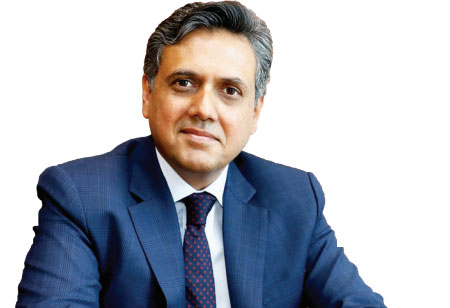
Focus On Indegenous Medtech R&D Path To Innovation In The New Norm


Anish Bafna, CEO & MD, Healthium Medtech , 0
Research and Development (R&D) has always remained the cornerstone in the maintenance of market superiority by the developed countries. As we chalk the path of a more robust healthcare infrastructure post pandemic, the Indian medtech sector will play an important part in the global arena.
The Indian Medical device industry could consider 2021 as a year of resurgence to the mainstream public view due to the pandemic. With India being dependent on medical devices as well as raw materials imports of around 80 percent till 2019-2020, it was time to step-up self-reliance to counter the production shock that the country felt. Healthcare infrastructure and delivery became the top agenda of the government from 2020 onwards, and is proved by the infusion of $5.13billion investment in promoting domestic manufacturing, which would provide long term tailwinds to this sector. Powered by the national movement to ‘Make in India’, local manufacturers stepped up to meet the rising demand for essential medical devices and consumables for the country and the world.
Indian medical devices industry is at an early stage of its development, with parallels to the emergence of the pharma industry in the early 2000s. As per data from Frost & Sullivan, the Indian medical devices market was valued at $7.3 billion in 2020 and is expected to grow at a CAGR of 9.2 percent, reaching $11.25 billion by 2025. Better awareness and affordability, coupled with cost-effective skilled labour and government initiatives around improving access to healthcare and incentivising domestic manufacturing is pushing growth in this sector. Around 50 percent of medical devices usage is from tier-I markets in the country. This could be due to the greater availability of skilled doctors & high-quality institutions, higher income levels and greater awareness among the population. These cities are hubs of advanced surgical practices and have a high penetration of healthcare infrastructure. However, with private healthcare players increasing their presence in tier-II & III markets strong growth indicators are arising in these markets as well. The consumables and disposables form the largest export category, accounting for 47percent of exports. Healthium was the largest exporter of sutures from India with over 51.66 percent share of exports by value in fiscal 2021.

The way forward into 2022 will be only through sustained innovation in the sector to address unmet needs in the country and the world. To provide a better perspective, the wound care and closure management market has not received enough attention from the Indian medtech companies. There is a lot of scope of innovation and localization in this sector as mentioned in the Modor Intelligence report. According to this report, this sector is set to grow at a CAGR of 6.2 percent till 2026. Some of the recent patented products that reached the Indian market during 2020-2021 in this category are barbed sutures with a triangle stopper which helps in faster wound closure, ligating clips with an innovative, patent-pending, design which provides a secure grip in surgeries, patented sutures which help prevent post partum haemorrhage, a leading cause of maternal mortality in India, to name a few, that were born out of innovation during this period. Similarly, the pandemic also brought about the need for antimicrobial gloves, which were successfully developed and commercialized for the country.
Another under served sector is that of sports medicine and the required indigenous devices to cater to treat joint
problems including rotator cuff tendon tears, shoulder impingement & dislocation, meniscal cartilage tears, anterior cruciate ligament tears, and wrist carpal tunnel syndrome. Therefore, developing arthroscopy equipment & accessories and arthroscopy implants & consumables is a sector that has much promise in the country.
As the medtech and consumables industry gears into developing research based products to cater to the need of the market, one of the limitations have always been on the side of quality standards. We must maintain our focus on high quality product innovation to benefit surgeons, patients and health systems around the world that is increasingly focused on medical products that deliver innovation, quality and value. We have to focus on the inhouse development and manufacturing of customizable high quality products to cater to global requirements. During the design and development stages itself, the international quality standards can be met with rigorous quality control checks, accreditation requirements and periodic inspections from various regulatory agencies like The United States Food and Drug Administration(USFDA), Therapeutic Goods Administration (TGA), The International Organization for Standardization (ISO) and Conformitè Europëenne (CE)that issue certifications.

To promote integrated research, development and commercialization in the medtech, biologics and biosimilars sector the department of pharmaceuticals (DoP) has recently released the ‘Draft Policy to Catalyze Research & Development and Innovation in the Pharma MedTech Sector in India’ that highlighted the need for developing a revised R&D to capture opportunities in the areas of rapid diagnostics, exports of Consumables & Disposables to gain a better share of the market than where we currently stand. The need of a dedicated R&D and Innovation Policy is meant to course correct three key areas Import Dependence Development Cycle and Infra structural Challenges. The framework brings to light the areas of improvement in the areas of regulations incentivization, enabling ecosystem for innovation & research, constant monitoring and evaluation. Since this draft policy has been developed with the support of the industry stalwarts, there is hope that this will bring about change in the respective sectors and propel the country towards the $130 billion mark by 2030.
Recognizing the immense growth potential of the medical device industry, this sector has been recognized by the Government of India (GoI) as a ‘sunshine sector’ for the ‘Make in India’ initiative. There has been numerous infusions of financial incentivies followed by policy changes since 2014, which led to the development of a robust and enabling ecosystem for this sector. This has resulted in the Andhra Pradesh MedTech Zone in August 2016, followed by others that are under development in multiple locations in India. Through the Department of Biotechnology, the government has invested in collaborative programs like Stanford India Biodesign programs, School of International Biodesign and others, to boost Medtech innovation in the country and develop the next generation of Medtech entrepreneurs. Such programs are being implemented at AIIMS and IIT Delhi in collaboration with leading universities of the developed world, with Biotech Consortium India as a techno legal management partner.
With increased interest in the Medtech capabilities of Indian companies bythe national and international venture capitalists, there is renewed confidence of funding that is available to scalable solutions that meet international quality standards across its stages of development. With the government initiatives supporting the pharmaceutical and medical device industry through multiple programs that include modification of regulatory guidelines, infrastructure support foreign and national investments stepping into 2022 looks more promising for the medtech industry.
The way forward into 2022 will be only through sustained innovation in the sector to address unmet needs in the country and the world
As the medtech and consumables industry gears into developing research based products to cater to the need of the market, one of the limitations have always been on the side of quality standards. We must maintain our focus on high quality product innovation to benefit surgeons, patients and health systems around the world that is increasingly focused on medical products that deliver innovation, quality and value. We have to focus on the inhouse development and manufacturing of customizable high quality products to cater to global requirements. During the design and development stages itself, the international quality standards can be met with rigorous quality control checks, accreditation requirements and periodic inspections from various regulatory agencies like The United States Food and Drug Administration(USFDA), Therapeutic Goods Administration (TGA), The International Organization for Standardization (ISO) and Conformitè Europëenne (CE)that issue certifications.

To promote integrated research, development and commercialization in the medtech, biologics and biosimilars sector the department of pharmaceuticals (DoP) has recently released the ‘Draft Policy to Catalyze Research & Development and Innovation in the Pharma MedTech Sector in India’ that highlighted the need for developing a revised R&D to capture opportunities in the areas of rapid diagnostics, exports of Consumables & Disposables to gain a better share of the market than where we currently stand. The need of a dedicated R&D and Innovation Policy is meant to course correct three key areas Import Dependence Development Cycle and Infra structural Challenges. The framework brings to light the areas of improvement in the areas of regulations incentivization, enabling ecosystem for innovation & research, constant monitoring and evaluation. Since this draft policy has been developed with the support of the industry stalwarts, there is hope that this will bring about change in the respective sectors and propel the country towards the $130 billion mark by 2030.
Recognizing the immense growth potential of the medical device industry, this sector has been recognized by the Government of India (GoI) as a ‘sunshine sector’ for the ‘Make in India’ initiative. There has been numerous infusions of financial incentivies followed by policy changes since 2014, which led to the development of a robust and enabling ecosystem for this sector. This has resulted in the Andhra Pradesh MedTech Zone in August 2016, followed by others that are under development in multiple locations in India. Through the Department of Biotechnology, the government has invested in collaborative programs like Stanford India Biodesign programs, School of International Biodesign and others, to boost Medtech innovation in the country and develop the next generation of Medtech entrepreneurs. Such programs are being implemented at AIIMS and IIT Delhi in collaboration with leading universities of the developed world, with Biotech Consortium India as a techno legal management partner.
With increased interest in the Medtech capabilities of Indian companies bythe national and international venture capitalists, there is renewed confidence of funding that is available to scalable solutions that meet international quality standards across its stages of development. With the government initiatives supporting the pharmaceutical and medical device industry through multiple programs that include modification of regulatory guidelines, infrastructure support foreign and national investments stepping into 2022 looks more promising for the medtech industry.